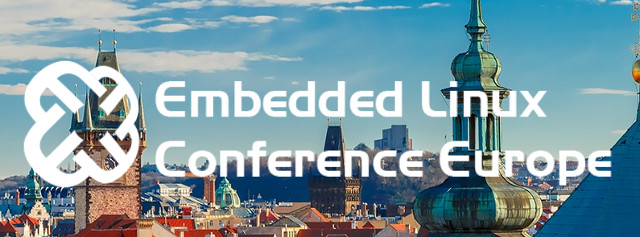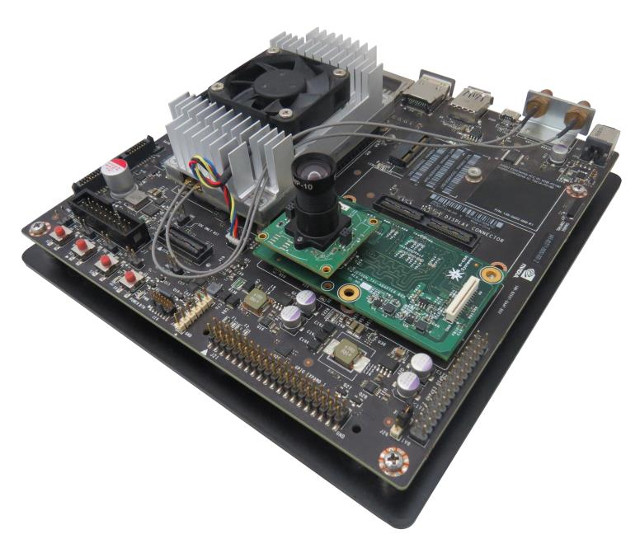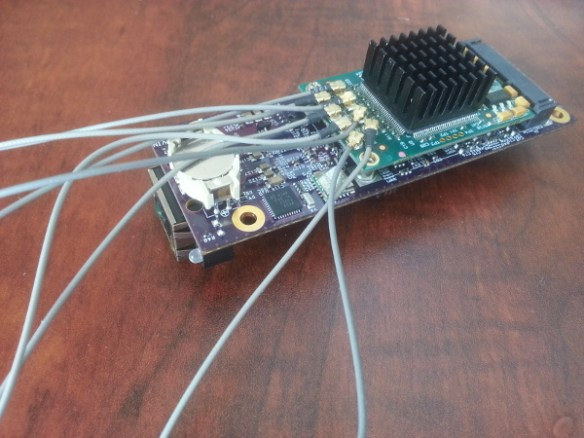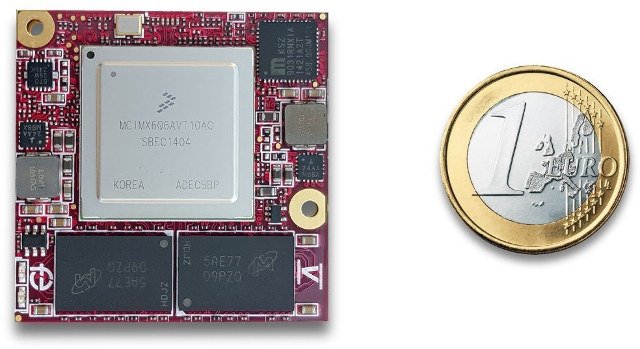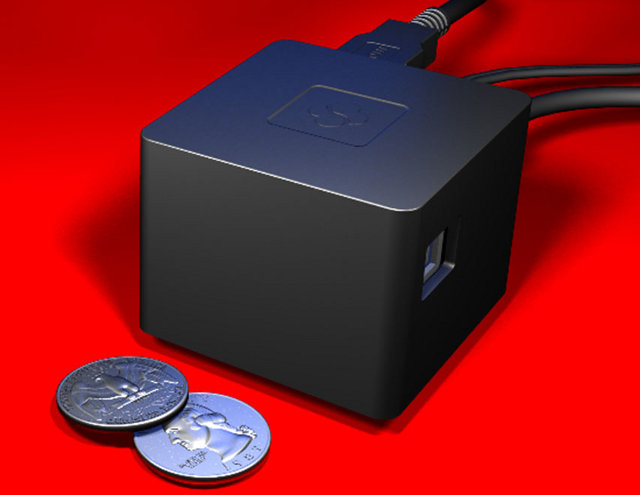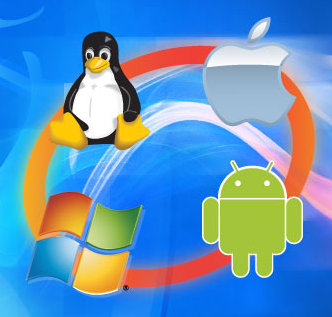The Embedded Linux Conference & IoT summit 2017 took place in the US earlier this year in February, but there will soon be a similar event with the Embedded Linux Conference *& Open Source Summit Europe 2017 to take up in Europe on October 23 – 25 in Prague, Czech Republic, and the Linux Foundation has just published the schedule. It’s always useful to find out what is being discussed during such events, even if you are not going to attend, so I went through the different sessions, and compose my own virtual schedule with some of the ones I find the most interesting. Monday, October 23 11:15 – 11:55 – An Introduction to SPI-NOR Subsystem – Vignesh Raghavendra, Texas Instruments India Modern day embedded systems have dedicated SPI controllers to support NOR flashes. They have many hardware level features to increase the ease and efficiency of accessing SPI NOR […]
e-con Systems Launches e-CAM130_CUTX1 Ultra HD Camera for Nvidia Jetson TX1 Development Board
e-con Systems, an embedded camera solution company, has just announced the launch of e-CAM130_CUTX1 MIPI camera board for NVIDIA Jetson Tegra X1 development kit. The 13MP camera is based on On Semiconductor AR1820 CMOS image sensor, connects to TX1 board via its 4-lane MIPI CSI-2 connector, and supporting up to 3840 x 2160 @ 30fps/ 13MP@ 20 fps video streaming in uncompressed YUV format. e-CAM130_CUTX1 4K camera board features & specifications: Sensor – 1/2.3″ Optical form factor AR1820HS sensor with on-board high performance ISP. Focus Type – Fixed focus Resolution: – 13MP on e-CAM130_CUTX1 (The sensor is capable of 18MP) Pixel size – 1.25μm pixel with Aptina / ON Semiconductor A-PixHS with BSI technology and advanced pixel architecture Sensor Active Area – 4912(H) x 3684(V) Responsivity – 0.62 V/lux-sec (545nm); SNR: 36.3 dB; Dynamic Range: 65.8 dB Output Format – Uncompressed YUV422 format and compressed MJPEG format. YUV422 resolutions: VGA @ […]
AVC8000nano mini PCIe Frame Grabber Captures up to 8 D1 Videos
There are plenty of solutions to stream or capture multiple video streams from cameras, but example for security purpose, but usually the equipment is relatively large and heavy. Advanced Micro Peripherals AVC8000nano mini PCIe capture card miniaturizes all that thanks to its form factor, and its 8 u.FL connectors used to capture eight D1 videos at full frame rate. AVC8000nano features: Video Inputs 8x Live NTSC/PAL video inputs with 8x 10-bit ADC and anti-aliasing filters 8x D1 size capture at full frame rate Formats – NTSC-M, NTSC-Japan, NTSC (4.43), RS-170, PAL-B,G,N, PAL-D, PAL-H, PAL-I, PAL-M, PAL-CN, PAL-60 SECAM Adjustments – Contrast, saturation, hue (or chroma phase), and brightness. Software adjustable Sharpness, Gamma and noise suppression Video Capture Formats – RGB555, RGB565, YCbCr 4:2:2, YCbCr 4:1:1 Windows support with Drivers and DirectShow/DirectDraw Linux with drivers and Video4Linux Form factor – Full height mini PCI Express Temperature Range – Commercial: 0°C to […]
iMX6 TinyRex Module and Development Board Support HDMI Input in Linux (Video Demo)
A couple of years ago, I wrote about iMX6 Rex open source hardware project combining a Freescale i.MX6 SoM and baseboard that aimed a teaching hardware design (schematics and PCB layout). I had not followed the project very closely since then, until I watched a video showcasing HDMI input capabilities in Linux using the new version of the module and baseboard called i.MX6 TinyRex. i.MX6 Tiny Rex module specifications: SoC – Freescale iMX6 processor up to 1.2GHz and 4 cores System Memory – Up to 4GB DDR3-1066 (533MHz) Storage – EEPROM Connectivity – 10/100/1000 Mbps Ethernet PHY I/Os via 3 board to board connectors: Display / Video Output 1x HDMI (up to QXGA 2048×1536) 1x LVDS (up to WUXGA 1920×1200) 1x 20-bit parallel LCD display (up to WXGA 1366×768) or 1x Video Input (CSI) 1x MIPI DSI differential display output (up to XVGA 1024×768) Video Input 1x 20-bit parallel video input […]
Embedded Linux Conference 2013 Schedule
The Embedded Linux Conference (ELC 2013) will take place on February 20 – 22, 2013 at Park 55 Hotel in San Francisco, California. ELC consists of 3 days of presentations, tutorials and sessions. There will be over 50 sessions during those 3 days. I’ll highlight a few sessions that I find particularly interesting, and that did not get presented at ELCE 2012 (AFAICR). February 20 11:00 – Anatomy of the arm-soc git tree by Olof Johansson, Google We are now two years into the new maintainer model for ARM platforms, and we have settled down into a workflow that maintainers have adjusted well to. Still, when new platforms arrive, or when maintainer ship changes hands, there’s sometimes a bit of ramp-up in getting used to how we organize our git tree and how we prefer to see code submitted to fit that model. This presentation will give an overview of […]
Video4Linux: Current Status and Future Work – ELCE 2012
Hans Verkuil, R&D software engineer at Cisco Systems Norway, talks about Video4Linux status, progress, and plans at the embedded Linux Conference in Barcelona, Spain, on November 7, 2012. Abstract: Video4Linux is a fast-changing subsystem where a lot of work is done to support the complex video hardware of embedded systems. This presentation will give an overview of the developments in the past year and the work that is planned for the near future. Hans covers SoC video devices support, core, control, and videobuf2 frameworks, HDTV timings & events API, video connector support, media controllers, codec & flash support, and more… You can also download the slides for this presentation. For further details about development, subscribe to linux-media mailing lists or chat on #v4l IRC channel on freenode. Jean-Luc Aufranc (CNXSoft)Jean-Luc started CNX Software in 2010 as a part-time endeavor, before quitting his job as a software engineering manager, and starting […]
$159 CuBox Pro: Open Source Development Platform Based on Marvell ARMADA SoC
Back in 2011, SolidRun unveiled the CuBox, a miniature open source development platform based on Marvell Armada 510 SoC (88AP510) and aimed at applications such as multimedia, set-top-box, network attached storage (NAS), thin client, digital signage, automation… SolidRun has now announced an upgraded version called CuBox Pro based on the same platform but with 2 GB RAM, and a redesigned casing. Here are the specifications of this development platform: Marvell Armada 510 SoC – 800 MHz dual issue ARM PJ4 processor, VFPv3, wmmx SIMD and 512KB L2 cache. 2GByte DDR3 at 800MHz 1080p Video Decode Engine OpenGL ES 2.0 graphic engine HDMI 1080p Output (with CEC function) Gigabit Ethernet, SPDIF (optical audio), eSata 3Gbps, 2xUSB 2.0, micro-SD, micro-USB (console) Standard Infra-red receiver for 38KHz based IR controllers. No JTAG required. Unbrickable for Developers (i.e. you can’t brick the device to the point you have to physically remove the flash, burn it […]
Collabora and Fluendo Release GStreamer SDK for Android
Collabora and Fluendo have recently announced the availability of GStreamer’s Software Development Kit for Android, which allows developers to create multimedia playback applications for Android smartphones and tablets using Gstreamer and the Android NDK.. The GStreamer SDK for Android targets Android 2.3.1 Gingerbread or higher (API Level 9 or greater). However, due to some of the restrictions of previous versions of Android, some features such as hardware acceleration are only available on Android 4.1 Jelly Bean (API Level 16 up). Normally, you’d need the GStreamer SDK which can be installed on Linux (Ubuntu, Fedora and Debian), Windows (XP/Vista/7/8) and Mac OS X (10.6 to 10.8). But for developing Android applications using Gstreamer, you don’t. What you do need first is a typical Android development environment with the latest Android SDK, the latest Android NDK, and optionally, but recommended, the Eclipse IDE with Android ADT and NDK plugins. Once everything is […]


